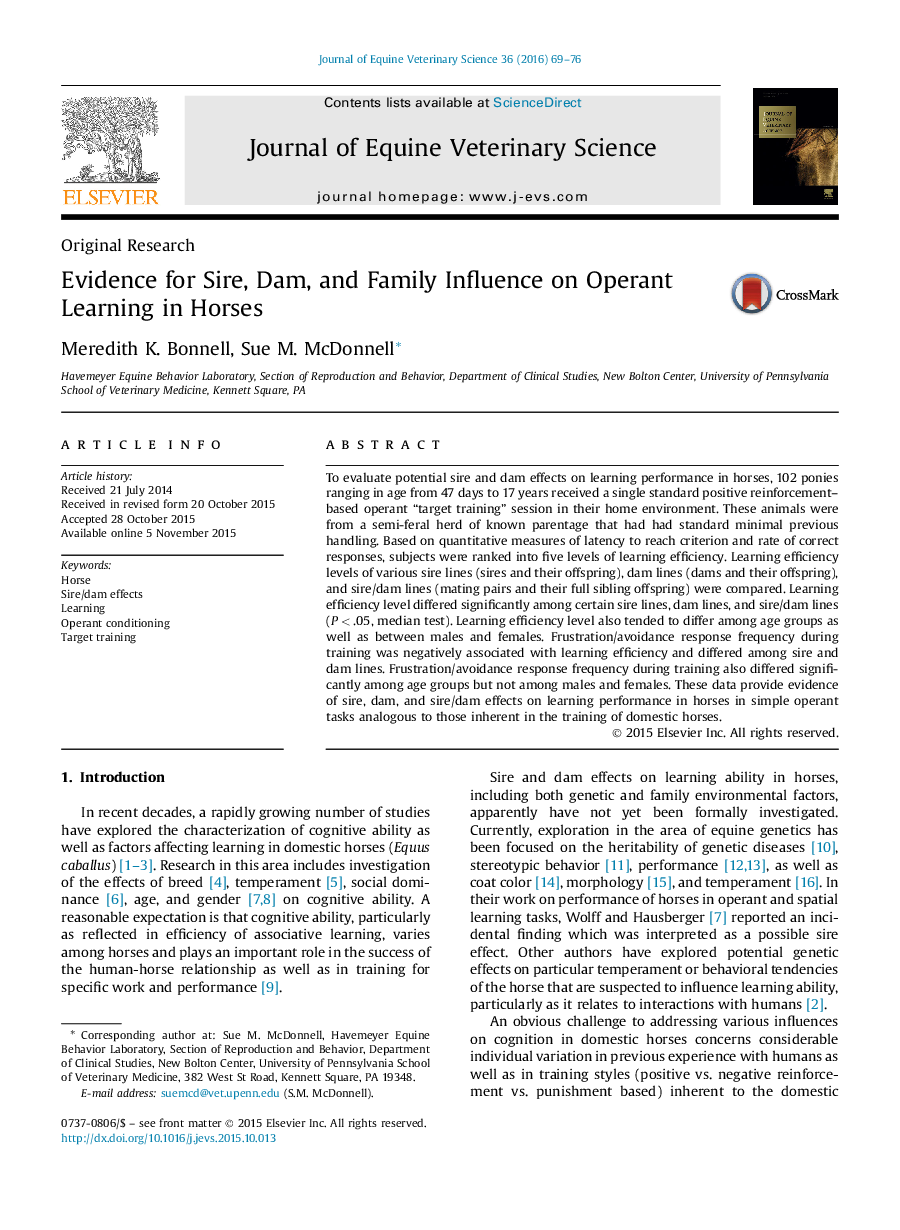| Article ID | Journal | Published Year | Pages | File Type |
|---|---|---|---|---|
| 2394761 | Journal of Equine Veterinary Science | 2016 | 8 Pages |
•Learning efficiency of 102 semi-feral ponies was evaluated in an operant conditioning task.•Significant differences were found among sire, dam, and full sibling lines.•Findings provide evidence for sire and dam influence on operant learning in horses.
To evaluate potential sire and dam effects on learning performance in horses, 102 ponies ranging in age from 47 days to 17 years received a single standard positive reinforcement–based operant “target training” session in their home environment. These animals were from a semi-feral herd of known parentage that had had standard minimal previous handling. Based on quantitative measures of latency to reach criterion and rate of correct responses, subjects were ranked into five levels of learning efficiency. Learning efficiency levels of various sire lines (sires and their offspring), dam lines (dams and their offspring), and sire/dam lines (mating pairs and their full sibling offspring) were compared. Learning efficiency level differed significantly among certain sire lines, dam lines, and sire/dam lines (P < .05, median test). Learning efficiency level also tended to differ among age groups as well as between males and females. Frustration/avoidance response frequency during training was negatively associated with learning efficiency and differed among sire and dam lines. Frustration/avoidance response frequency during training also differed significantly among age groups but not among males and females. These data provide evidence of sire, dam, and sire/dam effects on learning performance in horses in simple operant tasks analogous to those inherent in the training of domestic horses.
Graphical abstractLearning efficiency of seven families of ponies in simple positive reinforcement–based operant conditioning. Each cluster represents a sire/dam line. The first bar in each cluster represents the sire, the second bar represents the dam, and the striped bar represents the mean and standard error for the family. The remaining bars within each cluster represent full sibling offspring.Figure optionsDownload full-size imageDownload high-quality image (226 K)Download as PowerPoint slide
